Last Updated on: February 5, 2025
Vermont got its name from the French word vert, which means green, and mont, which means mountain. It is a small state that is known for its natural beauty with a mix of conifer and hardwood forests.
No wonder…
The Green Mountain State is a paradise for birders. It is home to more than 260 bird species, including voracious raptors and melodious songbirds. The diverse landscapes offer conducive habitats for a wide array of flying creatures. Many of them are also regular backyard visitors.
Read on and find out some of the birds of Vermont. We’ll also talk about their physical characteristics, habitats, and feeding behaviors.
Your Guide To The Birds Of Vermont
1. Blue Jay

The striking blue feathers of the blue jay make it beautiful and unmistakable. The underparts are white, while the head has a black necklace with a blue crest. Both sexes have a similar appearance.
The blue jay is an intelligent bird, making it fun to watch. It will visit bird feeders to store food on their throats and leave.
Up to 75% of a blue jay’s diet includes vegetable matter, such as nuts, grains, seeds, berries, and small fruits. It also eats insects, such as grasshoppers, beetles, and caterpillars. Spiders, snails, and small rodents are also consumed.
Some people do not like blue jays because they are noisy. They have a loud and metallic song, which is most apparent when there are predators around, such as hawks.
2. White-Breasted Nuthatch
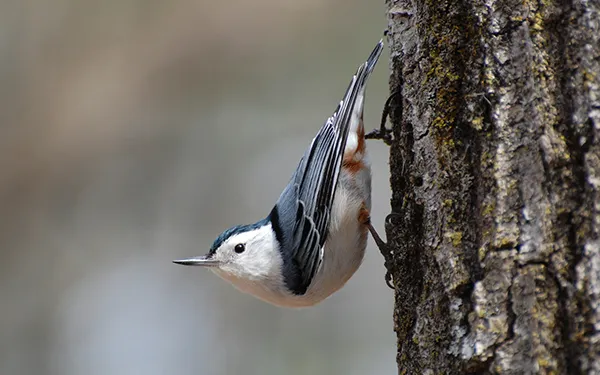
A compact bird with a pointed bill, short tail, and no neck, the white-breasted nuthatch has blue-gray wings and white cheeks. It also has a white breast, as the name implies. Males have a black cap, which is gray in females.
One of the defining physical features of white-breasted nuthatches is their strong beaks. They will stuff seeds and nuts in tree barks and use their beaks to crack open their food.
These backyard birds in Vermont are seen throughout the year. They thrive in open wooded areas and deciduous forests. They are also in forest edges and coniferous woods.
If you want white-breasted nuthatches to come to your backyard, you should install bird feeders with black oil sunflower seeds, safflower seeds, mealworms, and peanut hearts.
3. House Sparrow
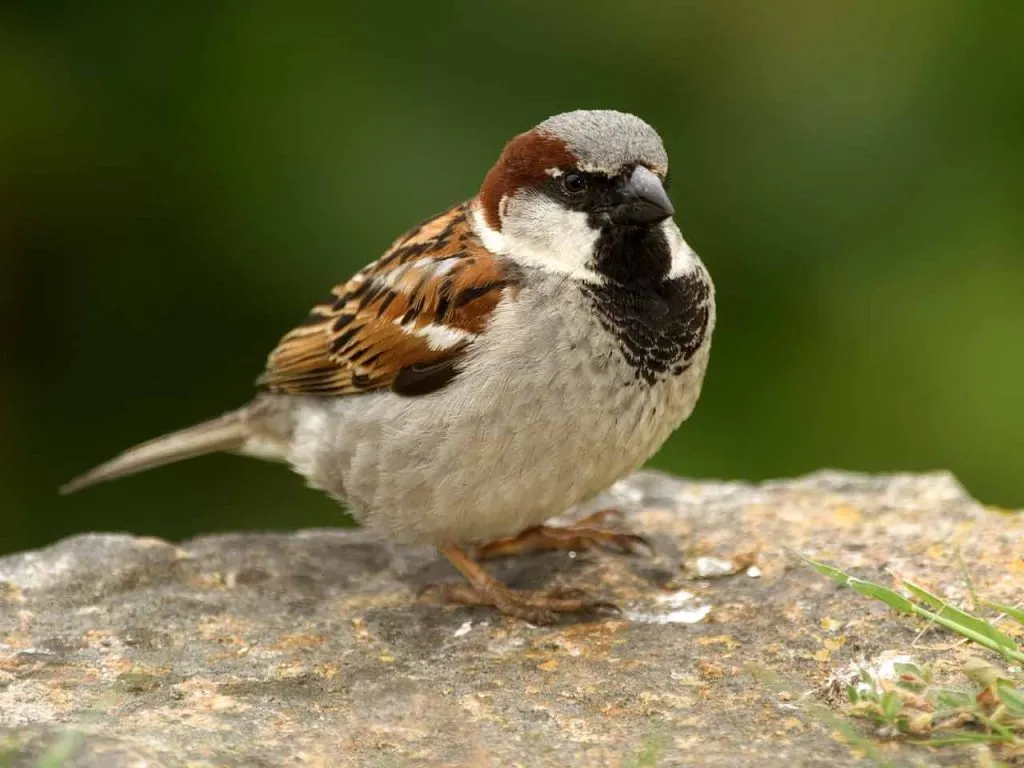
One of the most popular songbirds in Vermont, the house sparrow thrives in areas with human civilization. No wonder, they are in the state throughout the year.
These small birds have a length of 5.9 to 6.7 inches. When they are flying, their wings span a length of 7.5 to 9.8 inches.
Males have bright colors with a rufous neck, black bib, white cheeks, and gray heads. Females, on the other hand, are duller.
It is almost impossible to miss the presence of house sparrows because of their noise. Males make a series of shrilling notes to attract a mate and defend their territories.
While they can come to backyard feeders, they are often unwelcomed. These non-native species are invasive, but they can visit anyway, even if you do not feed them.
4. Black-Capped Chickadee
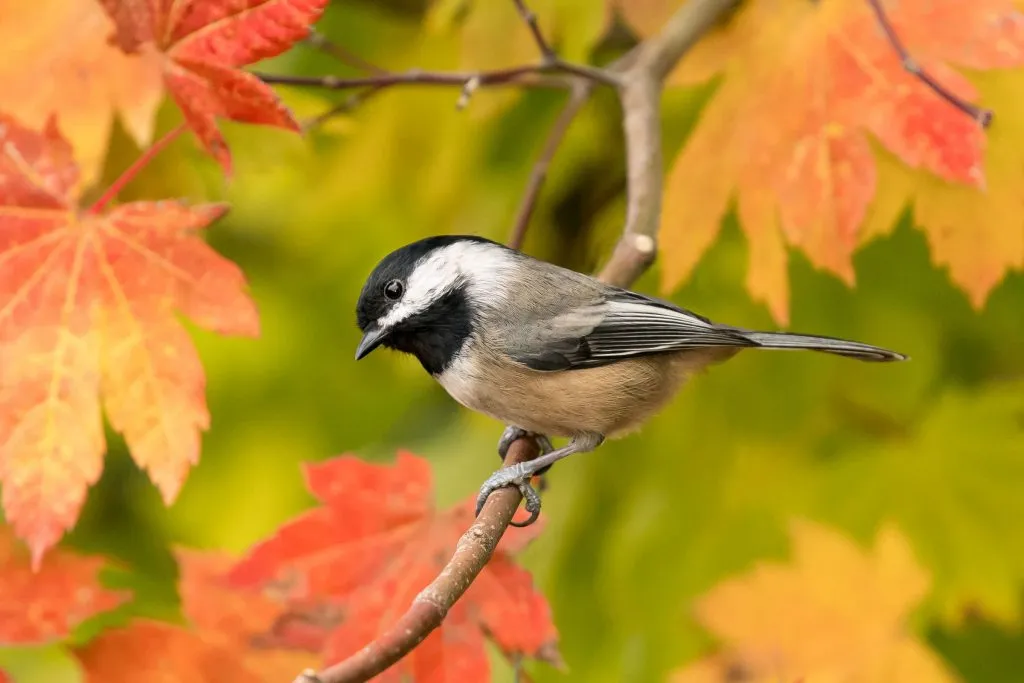
As it is named, the most prominent physical feature of the black-capped chickadee is its black cap. It also has gray wings and white cheeks. They are called cute birds because of their large heads and tiny bodies.
Aside from their physical appearance, you can also detect the presence of a black-capped chickadee by having an open ear. It has a two to three-note whistle.
Black-capped chickadees are in Vermont throughout the year. They are frequent visitors of bird feeders with seeds. In the wild, they are often found in cottonwood groves, deciduous forests, and thickets.
If you have just set up a new bird feeder, black-capped chickadees are amongst the first visitors. They are not afraid to gather food from the feeder even when there are larger birds.
5. House Finch
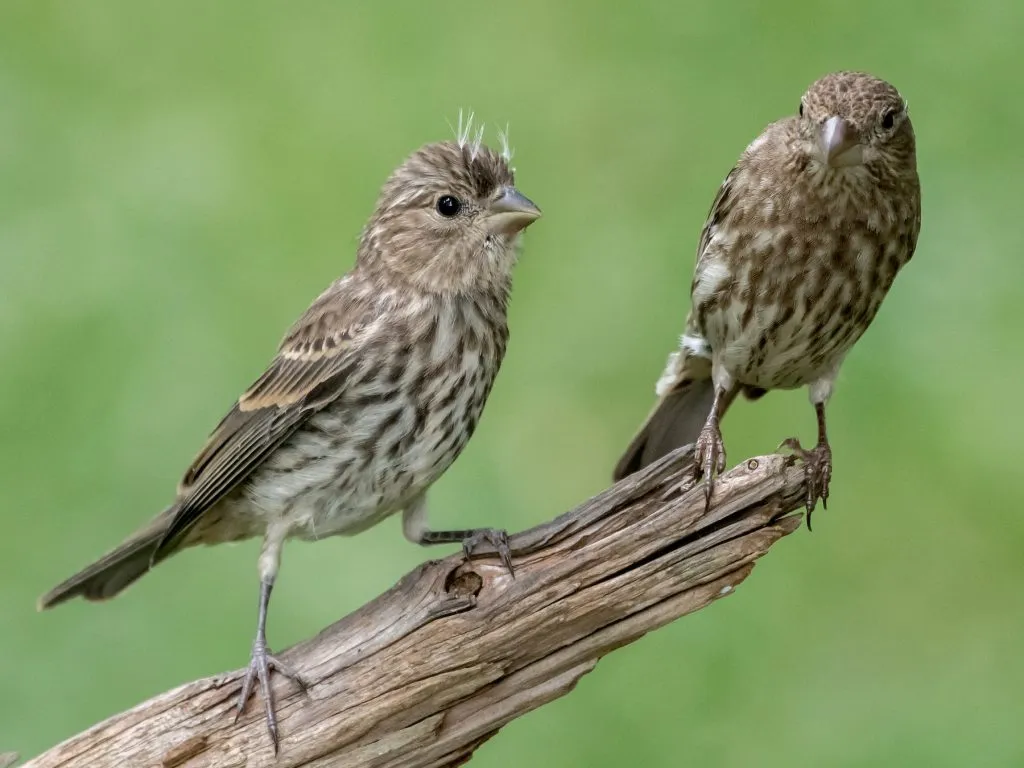
The physical appearance of the house finch varies between sexes. Males have rosy-red upper breasts and heads. Their bellies, tails, and backs have brown streaks. On the other hand, females are mostly brown with streaks on their bellies, tails, and backs.
House finches are not afraid of people. You do not need to plan a bird-watching trip if you want to see them since they often visit buildings, parks, and other areas with humans.
With their intense curiosity, house finches are among the first ones that will come to new backyard feeders. It is rare for them to travel alone, so they can also bring other birds to your property.
6. Red-Bellied Woodpecker
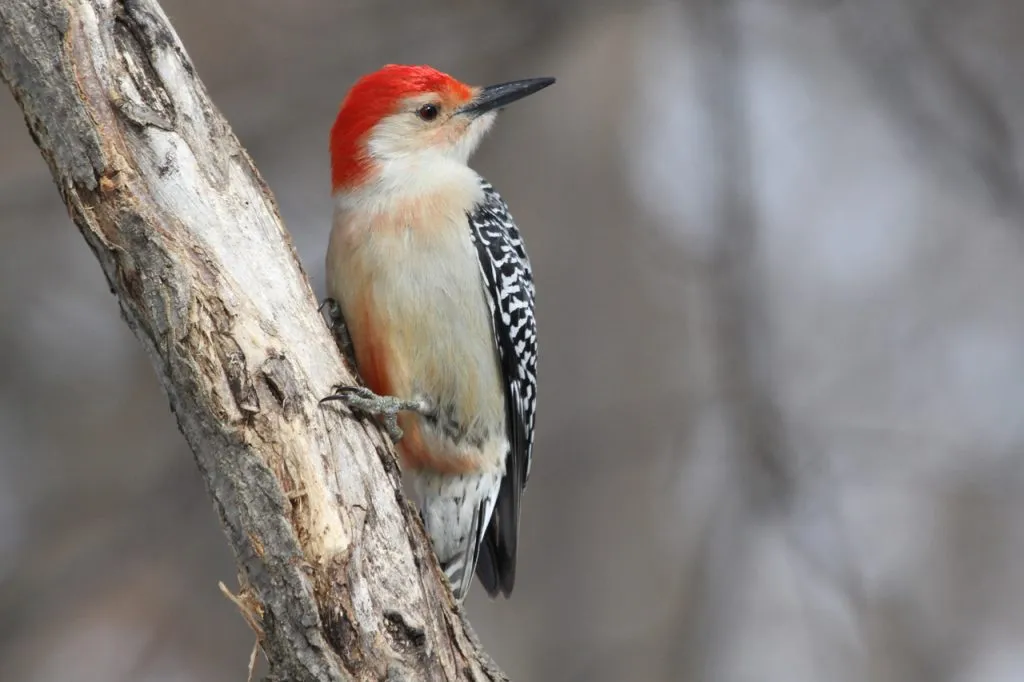
With its red cap, many people may confuse a red-bellied woodpecker with a red-headed woodpecker. These birds have a pale red spot on their belly, which is often hard to notice, especially if you are watching them from afar.
A notable physical feature is its strong beak, which is common in woodpeckers. It is used for digging trees and creating holes, which is also where they store their food for later consumption.
It is a year-round resident in the state. If you want to see one, look for them in deciduous forests, especially those next to streams and rivers.
You will also see a red-bellied woodpecker in the garden. They love bird feeders, especially if you live next to wooded areas.
7. Dark-eyed Junco
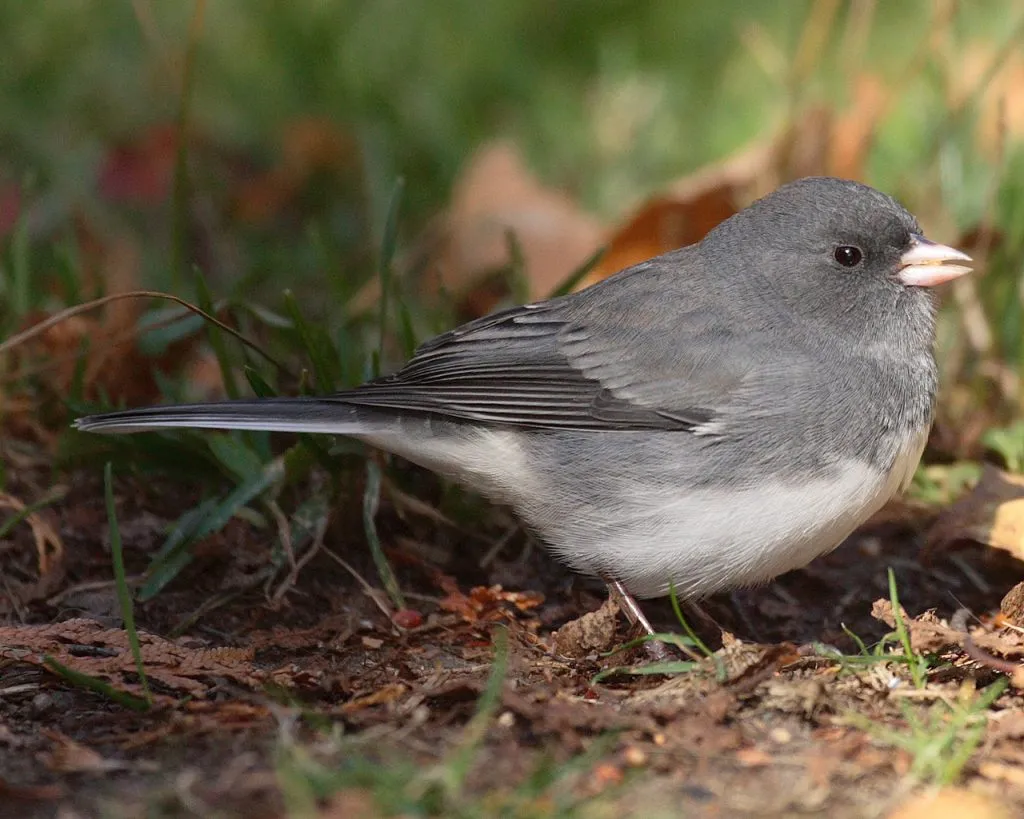
Also called snowbirds, dark-eyed juncos are among the most familiar backyard birds in Vermont in the winter.
The dark-eyed junco has a gray head, white belly, long tail, short neck, and round body. On average, the length ranges from 5.5 to 6.3 inches.
While these backyard birds in Vermont can visit bird feeders, they spend most of their time on the ground looking for seeds to eat in the winter. In the summer, they eat insects, including true bugs, grasshoppers, beetles, and caterpillars.
Dark-eyed juncos are popular with people who study bird languages. They make high-pitched sounds and ticking noises when communicating with other birds.
8. Red-Winged Blackbird
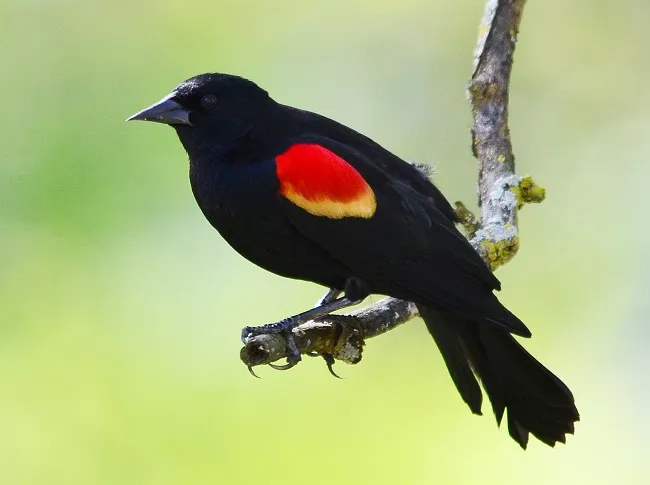
Male red-winged blackbirds are almost impossible to miss, and they are easy to identify. They have all-black bodies with red and yellow patches on the shoulders. Meanwhile, females have brown or dark gray upper parts with a hint of yellow surrounding the bill.
Identifying red-winged blackbirds is also possible through their sounds. They have a rich and musical song.
The red-winged blackbird is found in Vermont only during the spring and summer. For guaranteed sightings, head out to marshes and wetlands, which is where the bird spends its breeding season.
One of the easiest ways to invite a red-winged blackbird to the backyard is by scattering seeds on the ground. Platform feeders and tube feeders can also lure them.
9. Northern Cardinal

Male northern cardinals are almost entirely red with a black mask covering the eyes and chin. Females, on the other hand, have pale brown bodies with hints of red in their plumage.
Unlike most songbirds that you will find in Vermont, even females sing. They make a series of melodies with clear whistles.
In the wild, the northern cardinal lives in thickets and woodland edges. It also likes forest clearings. Luckily, they are present even in suburban gardens, so you can easily find them.
Sunflower seeds, peanuts, corn, and safflower seeds are must-haves in bird feeders to attract northern cardinals. It also helps to have a constant supply of water in a birdbath.
10. Hairy Woodpecker
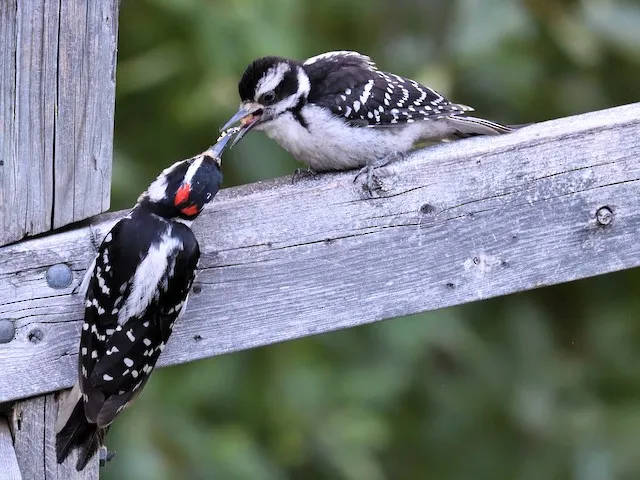
The hairy woodpecker has a stiff tail, chisel-like bill, and square head. The body is black and white. Males are distinguished from females through a tiny red cap. It is about the same size as an American robin.
When they are foraging, hairy woodpeckers hitch on limbs and trunks. They are energetic when searching for food. They can even excavate dead wood and scale tree bark.
The diet of a hairy woodpecker includes mostly insects, such as wood-boring beetles and caterpillars. They can also eat nuts, seeds, and berries.
It is not hard to spot hairy woodpeckers in Vermont. They are frequent in areas with large trees. They can also be present in orchards, swamps, cemeteries, and parks.
Do you want a hairy woodpecker to visit your backyard? A fool-proof way of attracting them is having seed and suet feeders.
11. Downy Woodpecker
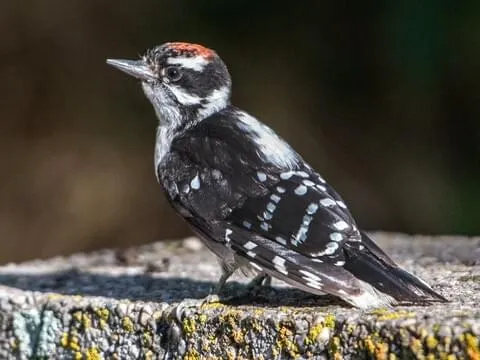
The downy woodpecker is often confused with a hairy woodpecker because they have a similar appearance. One of the biggest differences between the two is that downy woodpeckers are smaller. They also have a tinier bill.
Looking at the body of downy woodpeckers, the most noticeable is its black and white pattern. It has black wings with white spots.
Downy woodpeckers are year-round residents of the state. They prefer open wooded areas. These birds also do well in locations close to human settlements.
An effective way of attracting a downy woodpecker is by offering chunky peanut butter. The bird also loves sugar water, so you will benefit from having hummingbird feeders.
12. Gray Catbird

When observing a gray catbird from afar, it looks entirely gray. Upon a closer inspection, however, you will see that it has a black tail and black cap.
In the summer, gray catbirds will feast on insects, including caterpillars, moths, and ants. They will even eat grape jelly.
While they look endearing, some homeowners do not like having gray catbirds in the backyard. They can be pests because they are fruit foragers, especially if you have strawberries, grapes, cherries, and raspberries.
It is often difficult to identify birds through their calls. Gray catbirds, however, are easy to detect because of their cat-like songs.
13. Ruby-Throated Hummingbird
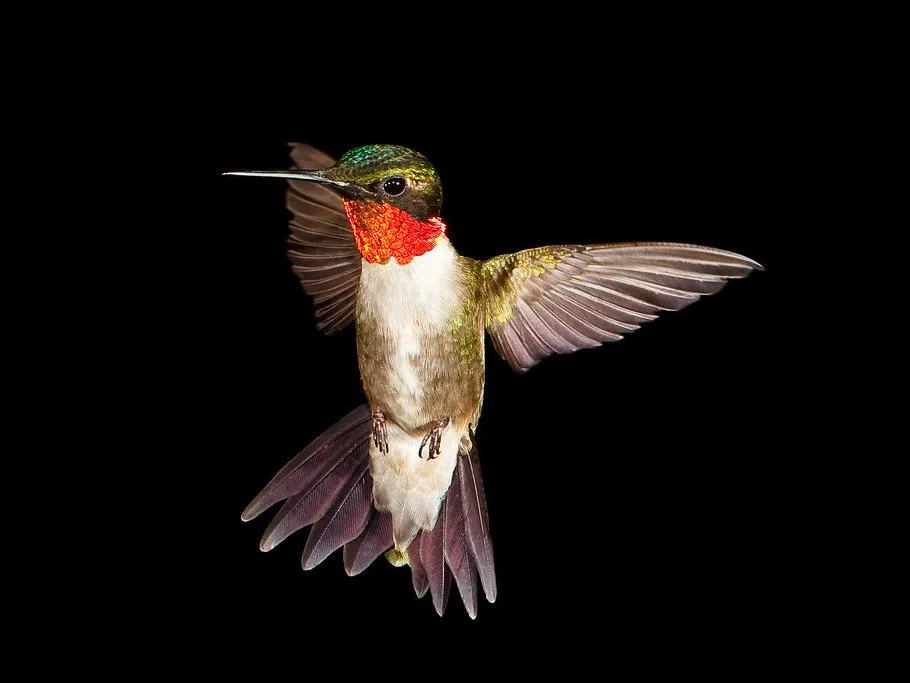
Male ruby-throated hummingbirds have prominent red throats. They also have a black mask and chin that extends beyond the eyes. An iridescent green is also noticeable on their back and head.
Meanwhile, females are paler. The throat and chin are mostly white with light green streaks. They do not have a red throat and black chin.
The best time to spot ruby-throated hummingbirds in Vermont is in the summer. Once it becomes cooler, they will migrate to Mexico.
Your best bet of seeing these birds is in woodland edges and flowering gardens. They are also attracted to nectar feeders. It is common to see them zipping from one nectar source to another while also catching flying insects while they are mid-air.
14. Song Sparrow
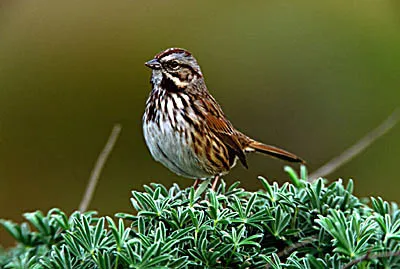
A year-round resident in Vermont, song sparrows are small birds with brown wings and backs. They also have white breasts with heavy brown streaks. Although, their plumage can vary from one region to another.
Small insects and worms make up the majority of its diet. They can also feed on green seeds and berries from small plants or shrubs.
Those who are looking for song sparrows in the state should head to wet and shrubby areas. These birds are often perched low while they are singing, making them easy to spot.
The name of the song sparrow is a reference to its melodious songs. It makes sweet sounds when communicating with other birds.
15. Mourning Dove
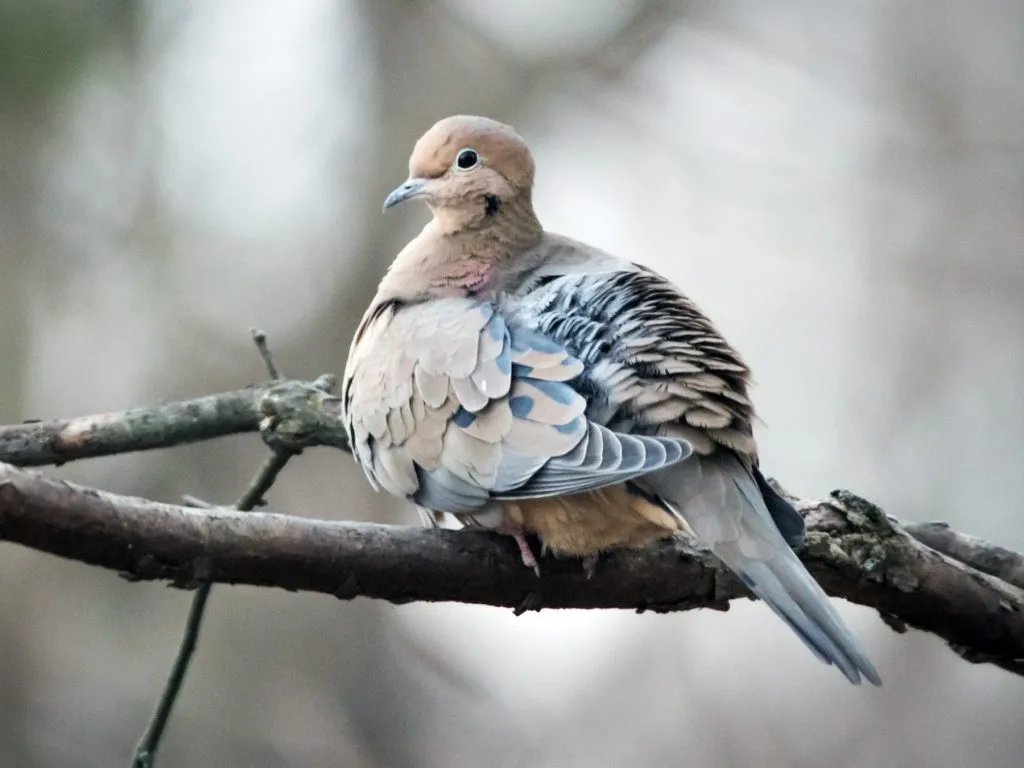
Listen to mourning doves, and you can quickly detect their presence. They are known for their sad cooing, which makes it appear that they are mourning.
The mourning dove is mostly gray throughout the body. The wings have big black spots, as well as the tips of their outer tail feathers. Their legs are pinkish, and they also have a distinct blue eye ring.
These common backyard birds in the state can come to bird feeders. However, they spend most of their time searching the ground for fallen seeds to eat. You can also attract mourning doves in ground feeders with mixed seeds.
16. Eastern Bluebird
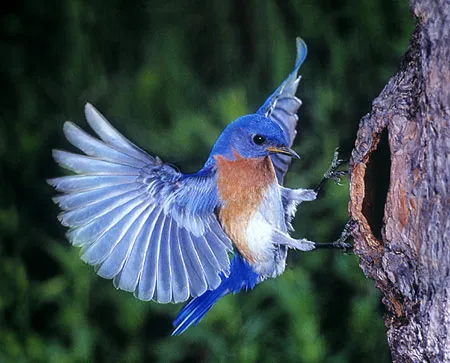
If you are looking for beautiful birds in The Green Mountain State, it is hard to go wrong with eastern bluebirds. Males have vibrant blue wings and upper bodies. They have red breasts and throats. On the other hand, females are grayish with pale-orange breasts.
In open countries, you will find an eastern bluebird perching on low branches, posts, and wires as it scours through the area in search of food.
Meadows are among the preferred habitats of eastern bluebirds. They will also visit bird boxes in backyards.
Make your backyard enticing for eastern bluebirds. Plant native shrubs and trees. Install bird baths. You can also have some luck by having feeders with mealworms.
17. American Crow
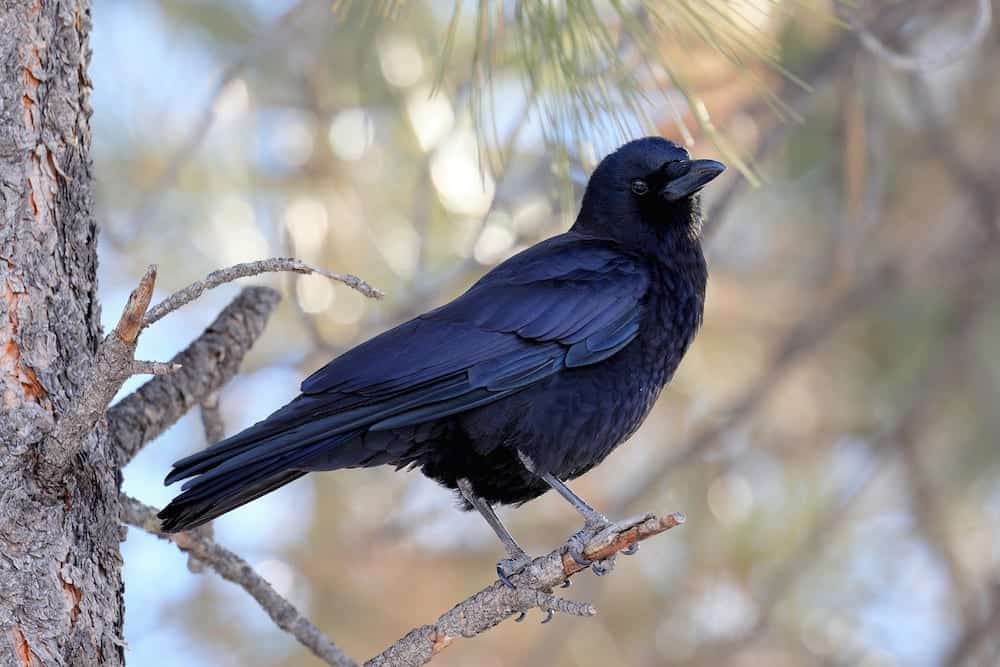
Adult American crows are all-black with an iridescent sheen. When they are young, they are about the size of adults, but the main difference is the blue eyes and hints of pink in their mouths, which darken over time.
Because American crows are adaptable, you will find them almost anywhere in Vermont, even close to human settlements. They are in marshes, rivers, fields, woodlands, farms, parks, and backyards.
Unlike other backyard birds, An American crow is not a frequent visitor of feeders. Nonetheless, you can try attracting them by having peanuts readily available for them to feast on.
A lot of people confuse American crows and common ravens. However, ravens are smaller, have hoarser calls, and have heavier bills.
18. Red-Eyed Vireo
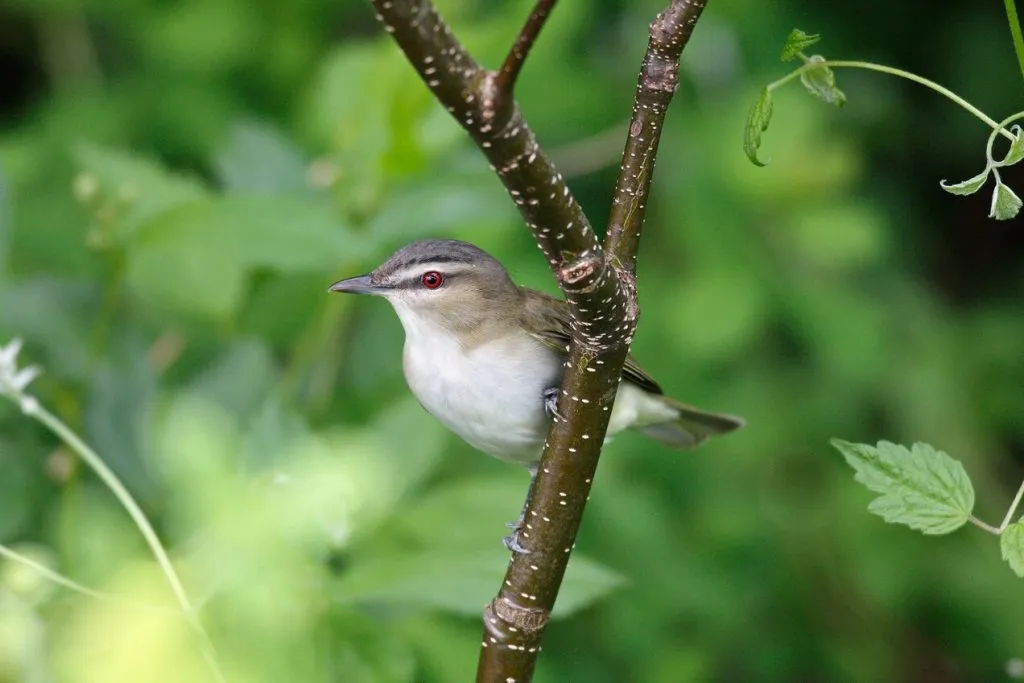
Like other vireo species, red-eyed vireos are small with large and hooked bills. Adults have dark red irides, which is one of the easiest ways to spot them. They also have a gray crown, white eyebrows, and olive-green upper body.
They are migratory birds in Vermont, so you will not find them year-round. In the winter, they travel to South America.
One of the most common places where you can see a red-eyed vireo is in deciduous canopies. They perch amongst green leaves, making it almost impossible to spot them because they can camouflage.
19. White-Throated Sparrow
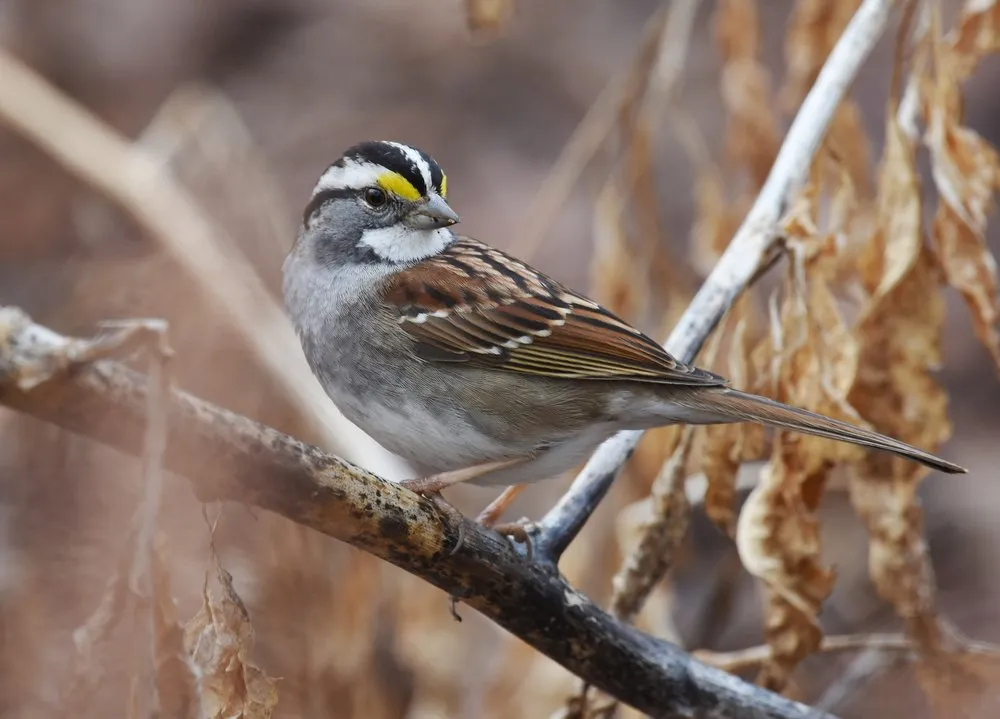
While white-throated sparrows are in Vermont throughout the year, they are most common from May to October, which coincides with their fall and winter migration.
As it is named, the most distinctive physical feature is its white throat. The head has black and white stripes. It also has a yellow coloration between the bill and eye.
Are you looking for white-throated sparrows in Vermont? Make sure to check out woods and forests where these birds often gather in large flocks.
Seeds from grasses and weeds make up most of its diet, especially those from sumac, dogwood, serviceberry, and mountain ash. It also eats different insects, especially those it can find on forest floors.
20. American Tree Sparrow
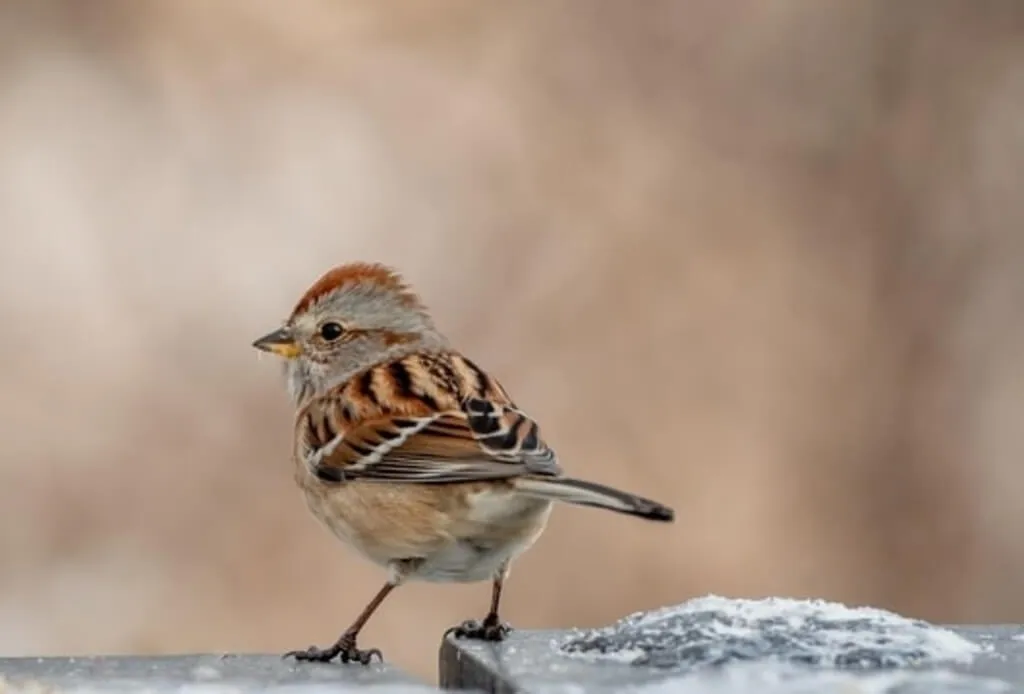
A small bird with a grayish-brown body, the American tree sparrow has an average length of 5.5 inches. It has a round head, plump body, and thin tail. As for the color, it has a gray head, brown back, and a rusty eyeline and cap.
American tree sparrows are winter birds in Vermont, so you will find them only from October to May. In the summer, they will migrate to Canada.
Weedy fields are the preferred winter habitats of American tree sparrows in Vermont. They are found near marshes or along forest edges.
It is also possible for them to come to backyards in the winter. They love feeders with hulled sunflower seeds and cracked corn.
21. Barn Swallow
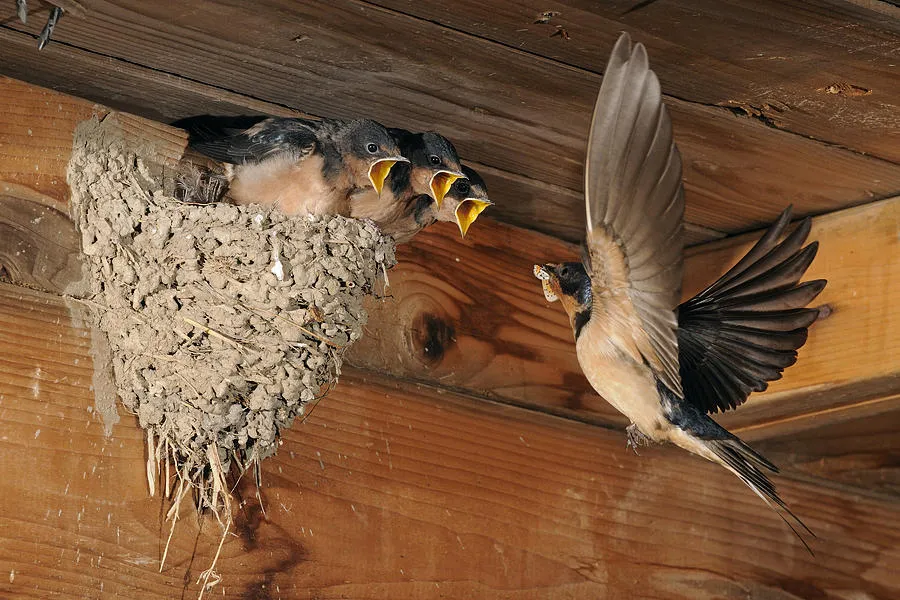
When it is perched, a barn swallow looks like it has a cone-shaped head with a flat top. Its shoulders are broad, and it has no visible neck. The tail, wings, and back are steely blue. Meanwhile, the underparts are tawny to rufous. It also has a cinnamon-colored forehead and a blue crown. The tail has white spots, which are most visible in flight.
One of the unique characteristics of barn swallows is the ability to feed on the wings. They will snag insects on the water or ground at a height of up to 100 feet.
The barn swallow got its name from its habit of building nests almost exclusively in open barns and similar man-made structures.
22. Chipping Sparrow
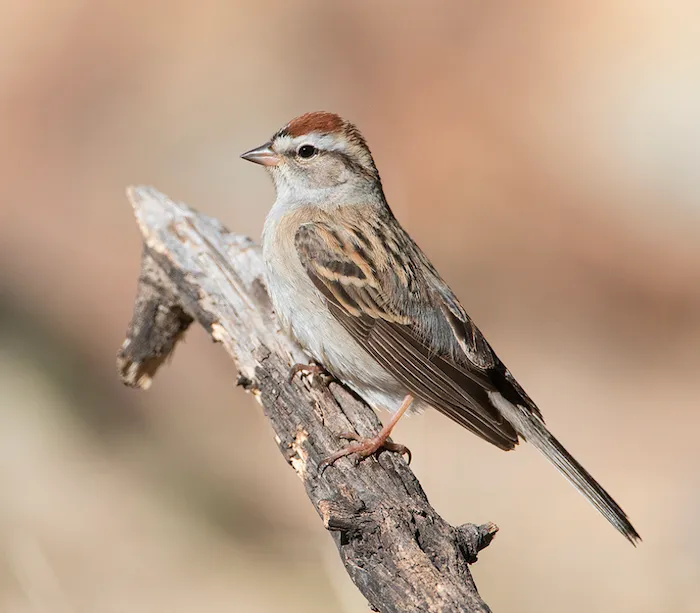
The original habitats of chipping sparrows are forest edges and open pine woods. Over the years, however, they became adaptable. Today, they can be seen around Vermont, even in backyards.
For easy identification, look for the bird’s medium-sized bill and a slender tail. The body is crisp and clean with a black line through the eyes. It also has a rusty crown.
When they are feeding, chipping sparrows spend most of their time on the ground. They are flitting in loose groups. The bird also often stays on the top of small trees while singing.
While they prefer to feed on the ground, they can also come to bird feeders. You can attract them by providing sunflower seeds or mixed seeds.
23. Cedar Waxwing
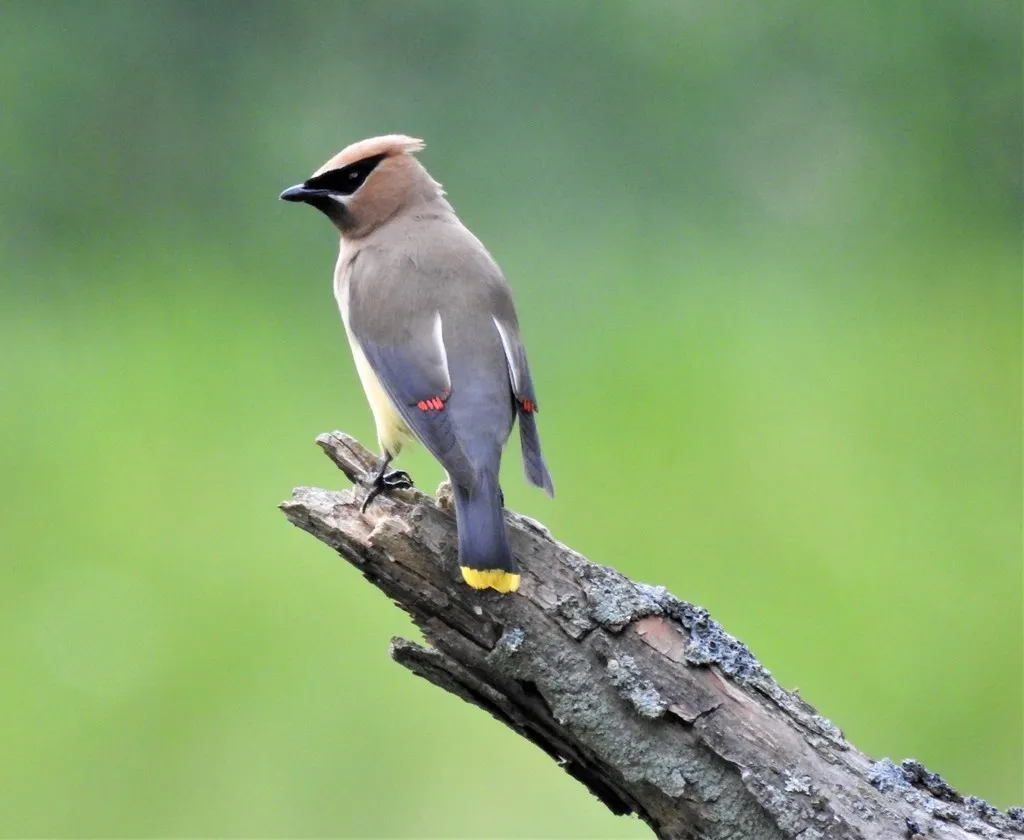
The bird got its name from the waxy red tips on its gray wings. Their bellies are pale lemon or yellow, which match the yellow band at the end of their square tails.
Cedar waxwings are known for being social birds. You will see them in large flocks almost throughout the year. They can also be seen coursing over the water, looking for flying insects to swallow.
In Vermont, you will see cedar waxwings in almost all kinds of woodlands. They are in orchards, farms, and suburban gardens as well.
24. Carolina Wren
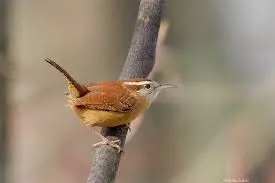
A year-round Vermont resident, the Carolina wren is dark brown on the upper body and light brown underneath. The throat and chin are white, and the eyebrow has a white stripe.
It is common for Carolina wrens to be creeping into areas with dense vegetation. They are curious and can come to yards and garages, which are also nesting sites.
The natural habitats of Carolina wrens include wooded areas and forest ravines. They are frequent in neighborhoods with lots of shrubs and trees.
They can visit backyards when food is available. Suet feeders are the best if you want to attract these chunky birds to your property.
25. Eastern Phoebe
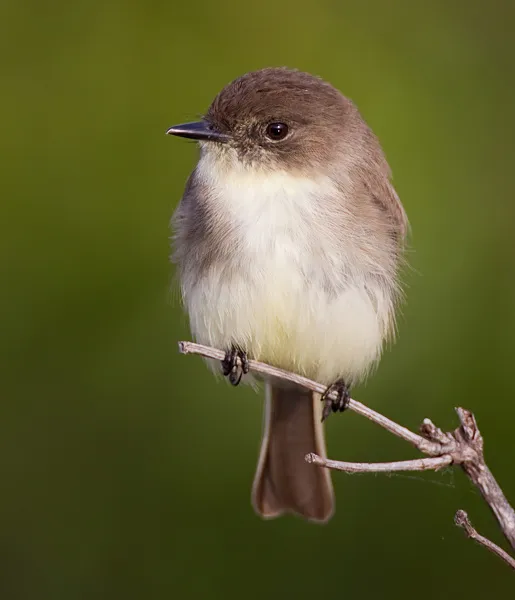
With its plain appearance, the eastern phoebe is seldom included in the itinerary of birdwatchers. Nonetheless, it is an interesting bird that is worth seeing.
The upper body of the eastern phoebe is grayish brown, while the underparts are off-white. The head is often the darkest part of its body.
The diet of easter phoebes consists mostly of insects, including beetles, wasps, true bugs, flies, and grasshoppers. Occasionally, they will also eat spiders and millipedes.
Eastern phoebes are diurnal birds. They are most active in the early morning. More so, they are often solitary, except in the breeding season when you can see them in pairs.
Watch This!
Frequently Asked Questions
Are there cardinals in Vermont?
Yes, there are cardinals in Vermont, with the most popular being the northern cardinal. You will find them in woodland edges and thickets, as well as suburban backyards. To lure cardinals into your property, make sure that you have their favorite seeds, including white milo, safflower seeds, and black oil sunflower seeds.
Are there blue jays in Vermont?
Common in the eastern half of the United States, blue jays are also seen in Vermont. It is a year-round resident in the state, which is known not only for its stunning plumage but also for its noise.
Where can I see birds in Vermont?
While they are abundant even in private backyards, the best way to see birds in the state is to head out and check a variety of natural habitats. Some of the places that should be on your list include Missisquoi National Wildlife Refuge, Button Bay State Park, Mount Mansfield, Dead Creek, Snake Mountain, and Eagle Point.
What is the state bird of Vermont?
The state bird of Vermont is the hermit thrush, which is present in all the state’s counties. It is a small bird with a brown and cream body. You will find the hermit thrush in the state almost throughout the year except for winter.
Conclusion
Vermont is nicknamed The Green Mountain State for a reason. While it is small, it is well-loved for its diverse landscapes and natural beauty, making it home to hundreds of birds, including those we listed above. They are not just in forests but even in parks and private backyards.
Are there other birds that you have seen in Vermont? Share them with us in the comments.

